As the ecommerce industry continues to expand at a breakneck pace, the competition among online retailers has become more intense. A study by Statista predicts that global ecommerce sales will surpass $8.1 trillion by 2026 making it critical for ecommerce businesses to develop a robust marketing strategy. But what exactly is ecommerce marketing, and how can online retailers optimize it to maximize profits in a highly competitive market?
In this blog, we answer these questions by presenting a comprehensive list of 20 proven ecommerce marketing strategies that can significantly boost your online business’s revenue. These strategies have been tested and validated by industry experts and have proven to be highly effective in driving sales and increasing conversions.
1) Social media marketing
Social media platforms like Facebook, Instagram, Tiktok, Snapchat, and Pinterest offer ecommerce businesses an opportunity to reach a vast audience of potential customers. By producing high-quality content that resonates with their target audience, ecommerce businesses can establish themselves as an authority in their industry and drive more sales.
To create engaging content, businesses must first understand their target audience’s needs and interests. This includes conducting market research, analyzing customer feedback, and monitoring social media trends.
Glossier is known for its natural and relatable approach to showcasing their beauty products. They don’t just sell products, they create a community that people trust and feel connected to.
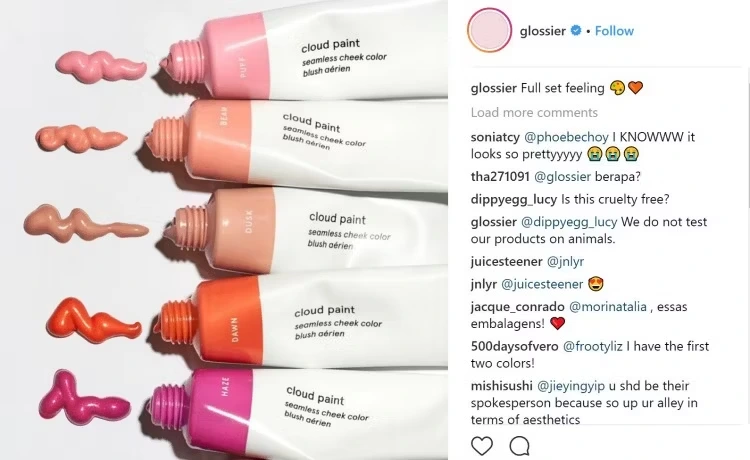
One of the things that makes Glossier so successful on social media is their focus on user-generated content. By encouraging their followers to share their own photos and experiences using Glossier products, the brand has built a loyal following that’s constantly engaged with their content.
Tools like Hootsuite, Buffer, and Sprout Social can help D2C brands manage their social media accounts and schedule posts in advance.
2) Email marketing
Email marketing is one of the most cost-effective tools for ecommerce businesses to connect with customers and drive sales. By using pop-up forms, or running social media campaigns brands can build a quality email list.
These email lists can then be segmented based on purchase history, location, demographics, and more. Tools like Moda, Klaviyo, and Omnisend can help manage email lists and automate campaigns such as welcome series, abandoned cart emails, and product launch emails.
To create engaging emails, brands should focus on crafting compelling subject lines, visually appealing designs, clear and persuasive calls-to-action, and using dynamic content and personalization.
Casper, the bedding brand, is an excellent example of a business that uses email marketing to drive sales. They segment their email list based on customers’ sleep habits and preferences, send targeted emails with personalized product recommendations, educational content, and promotional offers, and achieve high open rates, click-through rates, and conversion rates.
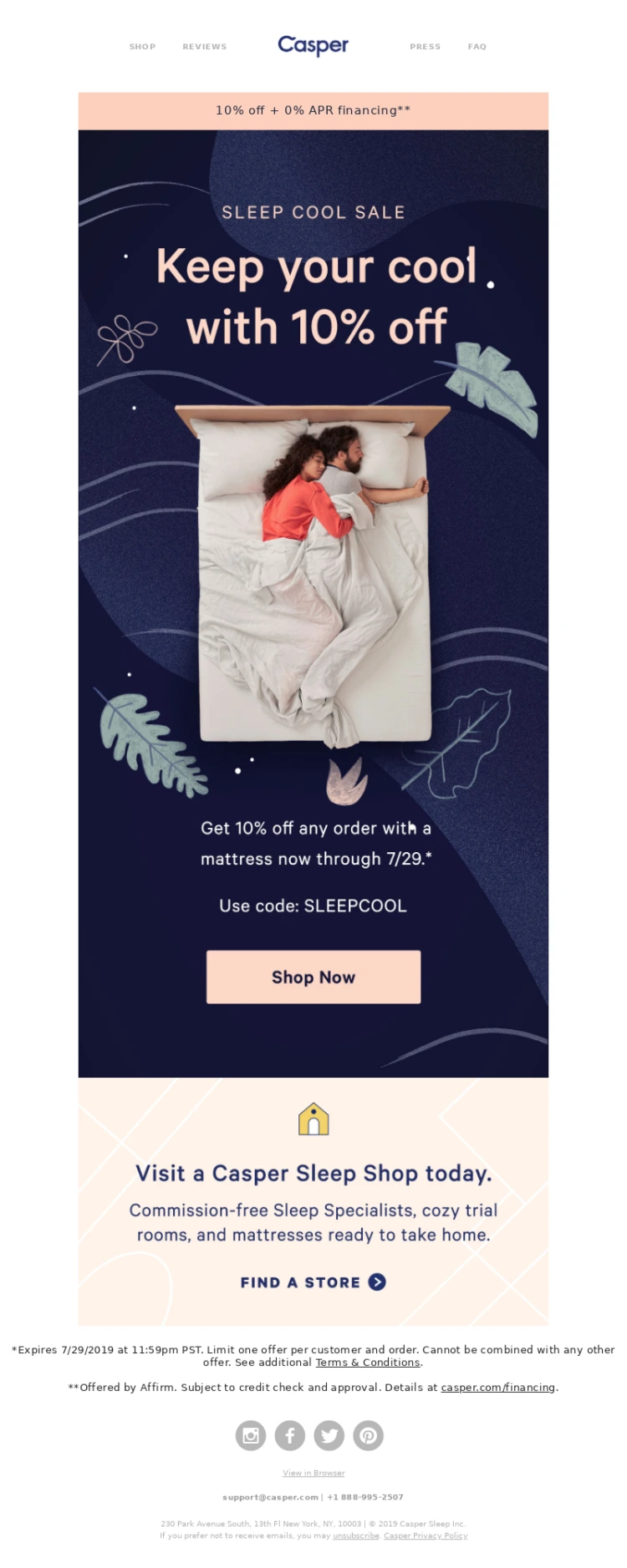
3) Search engine optimization (SEO)
Search Engine Optimization (SEO) is a crucial ecommerce marketing strategy that involves optimizing your website to rank higher on search engine results pages (SERPs) and drive more traffic to your ecommerce store. To achieve this, you need to optimize your website’s structure, metadata, images, and content for relevant keywords. Creating high-quality and engaging content is also essential.
Keyword research is essential for SEO success, helping you identify the high-intent keywords your audience is searching for, and allowing you to create content that addresses their needs and interests. Tools like Google Keyword Planner, SEMrush, and Ahrefs can help you with keyword research.
Building backlinks is another important aspect of ecommerce SEO strategy. Backlinks from other websites pointing to your ecommerce store increase its authority and credibility. The more high-quality backlinks you have, the more likely your site is to rank higher on SERPs.
Warby Parker and ASOS are examples of ecommerce brands that have successfully implemented SEO strategies.

Warby Parker creates high-quality content on eyewear and eyecare topics to attract organic traffic, while ASOS optimizes its product pages with long-tail keywords to drive targeted traffic to its site.
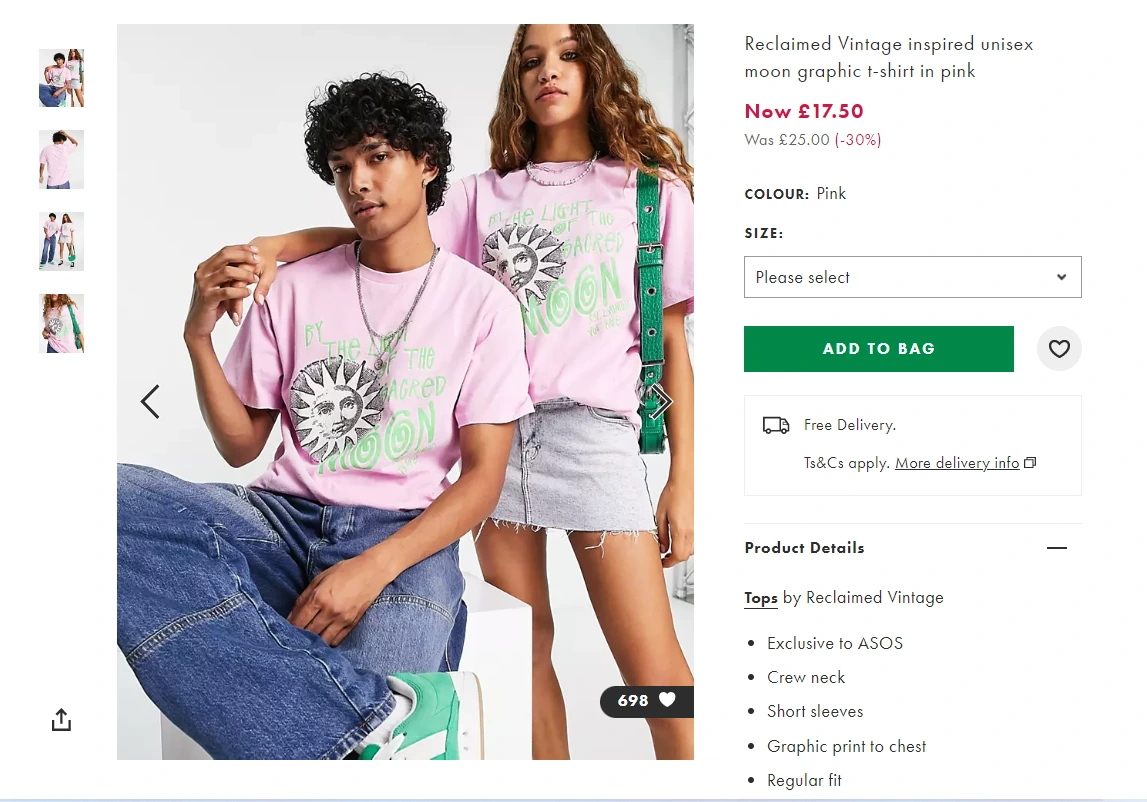
4) Pay-Per-Click (PPC) advertising
Pay-Per-Click (PPC) advertising is an ecommerce marketing strategy that involves creating targeted ads on search engines and social media platforms to drive traffic to your ecommerce store. With PPC advertising, you only pay when someone clicks on your ad, making it a cost-effective way to promote your online business.
To start, you need to create targeted ads that are relevant to your audience and include specific keywords that people are searching for. Tools like Google Ads, Facebook Ads, and Instagram Ads can help you create and launch your ads on the respective platforms.
Retargeting campaigns are crucial for PPC advertising. By setting up retargeting ads, you can reach people who have previously visited your ecommerce store but have yet to make a purchase. Retargeting ads use cookies to track website visitors and show them relevant ads on other websites they visit, giving you another opportunity to convert them into customers.
Data analysis is also essential for improving the performance of your PPC campaigns. By monitoring metrics like click-through rates, conversion rates, and cost per click, you can identify areas for improvement and make adjustments to your ad campaigns accordingly.
Birchbox uses Instagram ads to promote its monthly subscription box and target its audience based on their interests and behavior on the platform.

5) Affiliate marketing
Affiliate Marketing is a performance-based strategy that involves partnering with affiliates to promote your ecommerce products. Affiliates are individuals or businesses with a relevant audience who promote your products in exchange for a commission on each sale they generate.
To track the performance of your affiliates, you need to use tracking technology like affiliate tracking software or referral links. These tools allow you to monitor the performance of your affiliate program and make adjustments as necessary.
ASOS is a successful example of affiliate marketing. Their program offers a commission of up to 6% on each sale generated by affiliates.
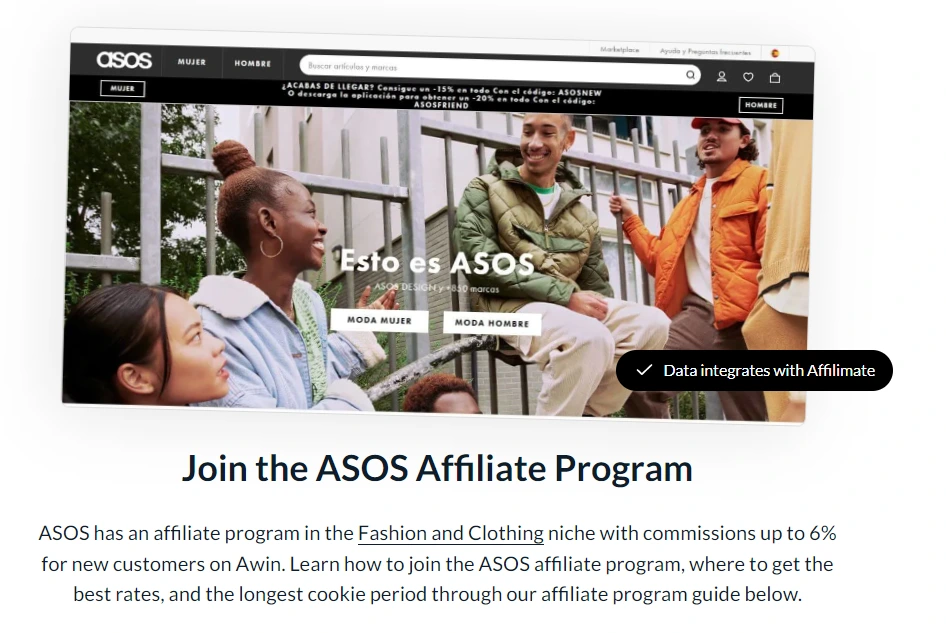
6) Content marketing
Content marketing is an effective ecommerce strategy that involves creating valuable, relevant, and consistent content to attract and retain a specific audience. Ecommerce businesses must create content tailored to their target audience’s interests and needs by conducting research and using analytics tools. Effective content marketing tactics include creating blog posts, videos, infographics, and social media posts.
It’s essential to optimize content for search engines and social media platforms by using relevant keywords, meta descriptions, and tags. To drive sales and conversions with content marketing, ecommerce businesses can use calls-to-action (CTAs) that encourage users to take a specific action.
A great example of content marketing is the cosmetics brand Sephora. Sephora’s website is filled with valuable beauty tips and tutorials, including a blog and a YouTube channel that features makeup tutorials and product reviews.

The brand also has a robust social media presence, with over 20 million followers on Instagram. By providing valuable content and building a strong community around their brand, Sephora has become a go-to destination for beauty enthusiasts, ultimately leading to increased sales and revenue.
7) Video marketing
Video marketing has become increasingly popular in recent years as a way to engage audiences and drive sales. By creating product videos that showcase the features and benefits of your products, you can give potential customers a more immersive and engaging experience than traditional marketing methods.
To make the most of video marketing, it’s important to promote your videos on social media and other platforms (YouTube, Instagram, and Facebook) where your target audience is likely to be active. You can also use video ads to drive conversions. Platforms such as Google Ads and Facebook Ads allow you to create targeted video ads that are displayed to users based on their interests, demographics, and search behavior.
One brand that has successfully leveraged video marketing is Dollar Shave Club. The brand’s humorous and engaging videos have helped them to stand out in a crowded market and build a loyal customer base.
8) Influencer marketing
Influencer marketing offers a unique opportunity to reach a wider audience through trusted and influential individuals. To leverage this strategy, ecommerce businesses can partner with influencers who have a significant following in their niche and whose values align with the brands. This can help create an authentic connection with the audience, resulting in increased trust and credibility.
Featuring influencer-created content on the brand’s website or social media channels can help showcase the product in a relatable and engaging way. Additionally, companies can use tracking technology to analyze influencer performance and optimize campaigns for better results.
Fashion Nova is an ecommerce brand that uses influencer marketing to promote its products. They have a strong presence on platforms like Instagram and Twitter, where they regularly post high-quality photos of their clothing and accessories.

In addition to its own content, Fashion Nova also leverages user-generated content (UGC) by reposting photos and videos from customers who tag the brand in their posts. Tools that can be used for influencer marketing include AspireIQ, Upfluence, and Influencer.co, which help businesses find and manage influencer partnerships.
9) Mobile optimization
As more and more people use their mobile devices to browse and shop online, it’s crucial for ecommerce businesses to prioritize mobile optimization. This includes optimizing your website and checkout process to be mobile-friendly, as well as creating mobile-friendly ads and content.
Mobile optimization can also improve your website’s search engine rankings, as Google and other search engines prioritize mobile-friendly websites in their results pages. By implementing mobile optimization strategies, you’ll be able to reach a wider audience and provide a better user experience, ultimately leading to increased revenue for your ecommerce business.
A great example of a company that excels in mobile optimization is H&M. The ecommerce giant has a mobile app that provides a seamless shopping experience for customers, including easy checkout option. H&M also uses SMS marketing to send order updates and promotions to customers who have opted in to receive them.
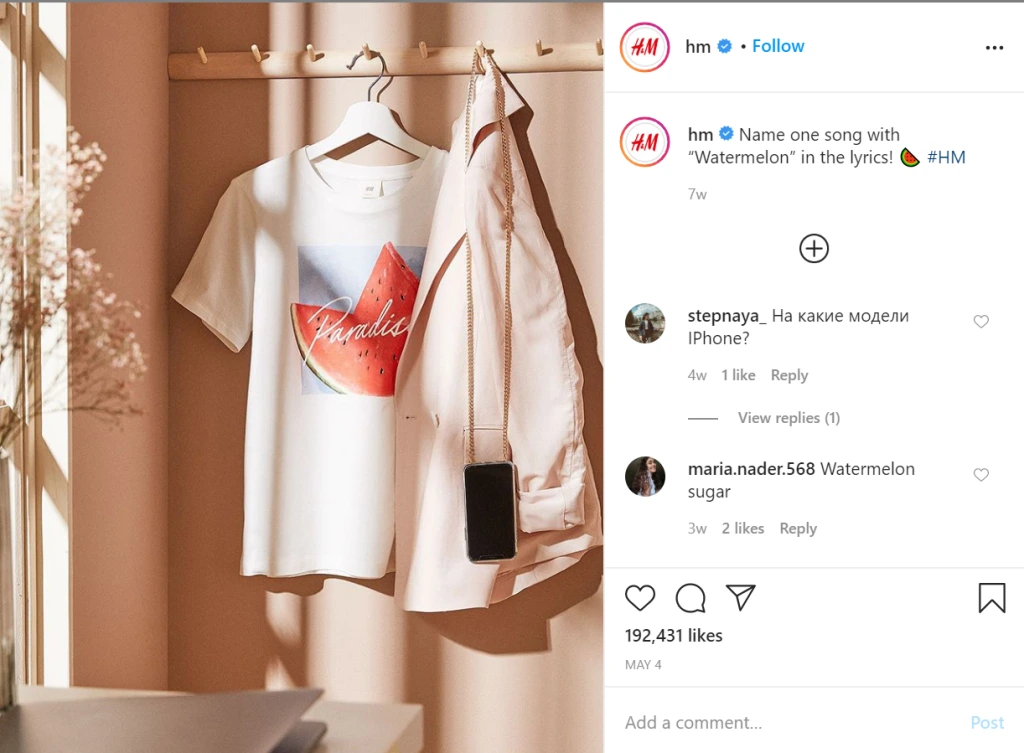
10) Customer reviews and testimonials
Encouraging your satisfied customers to leave reviews can help build a positive reputation for your business. You can do this by sending follow-up emails asking for feedback, or by incentivizing customers to leave reviews with discounts or promotions.
In addition to collecting reviews, it’s important to prominently display them on your website and social media platforms. This helps build credibility and trust with potential customers who may be hesitant to make a purchase.
Responding to negative reviews is also crucial in maintaining customer satisfaction. Addressing concerns and offering solutions can turn a negative experience into a positive one and show potential customers that you value their feedback and are committed to improving their experience.
Many ecommerce platforms have built-in review and testimonial features, such as Shopify’s Product Reviews app or Yotpo. There are also third-party review management tools like Trustpilot and Yelp that can help collect and display reviews.
11) Hyper- personalization
Hyper-personalization is a marketing strategy that involves tailoring the shopping experience to the individual behavior and preferences of each customer. By collecting and analyzing customer data, ecommerce businesses can offer personalized product recommendations, customized email campaigns, and targeted promotions that are more likely to result in conversions.
One example of a company that has successfully implemented hyper-personalization is Rothy’s, which uses customer data to offer personalized product recommendations and dynamic pricing.
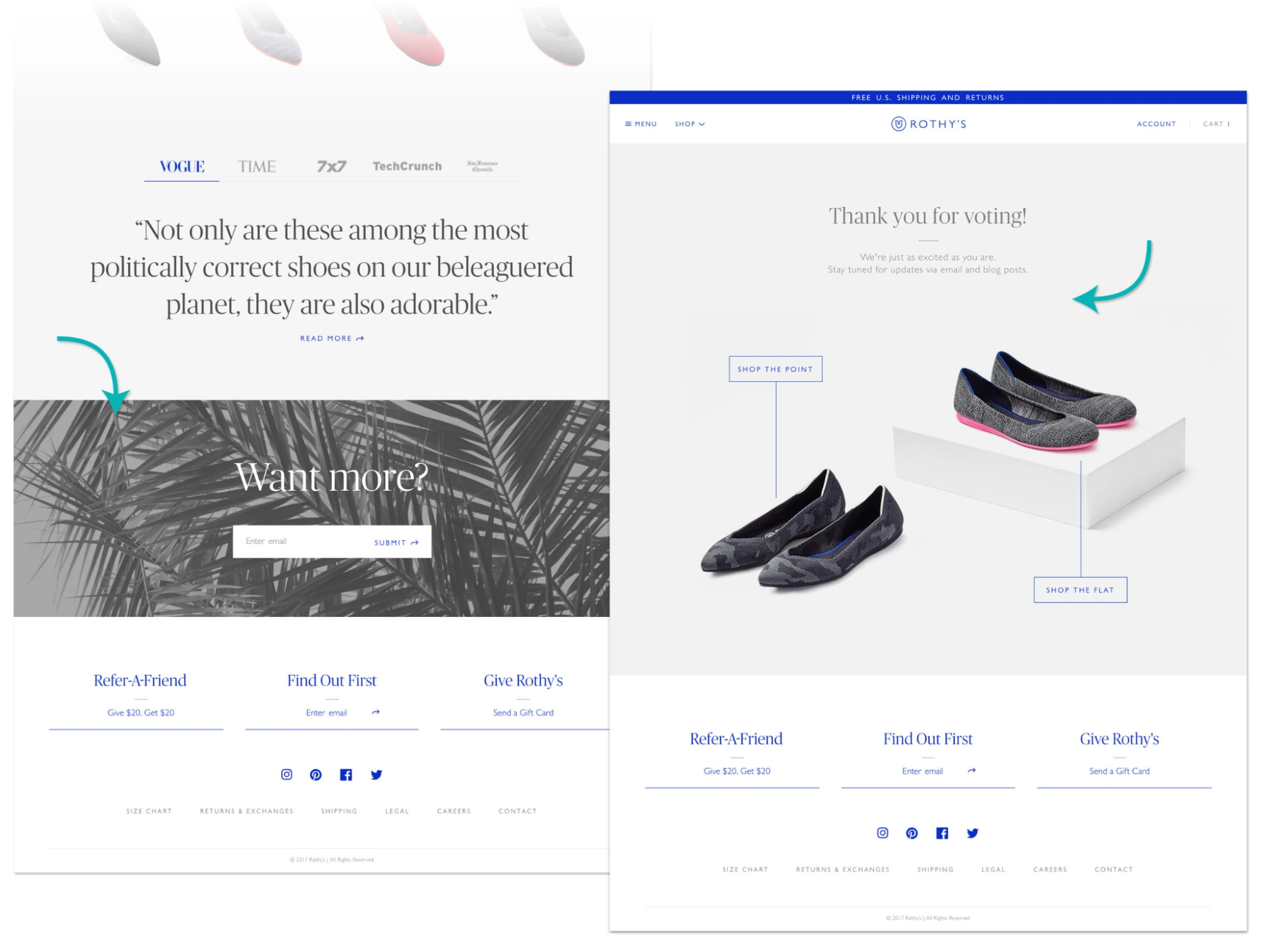
Another example is Brooklinen, which uses viewing data to offer personalized content recommendations to each user.
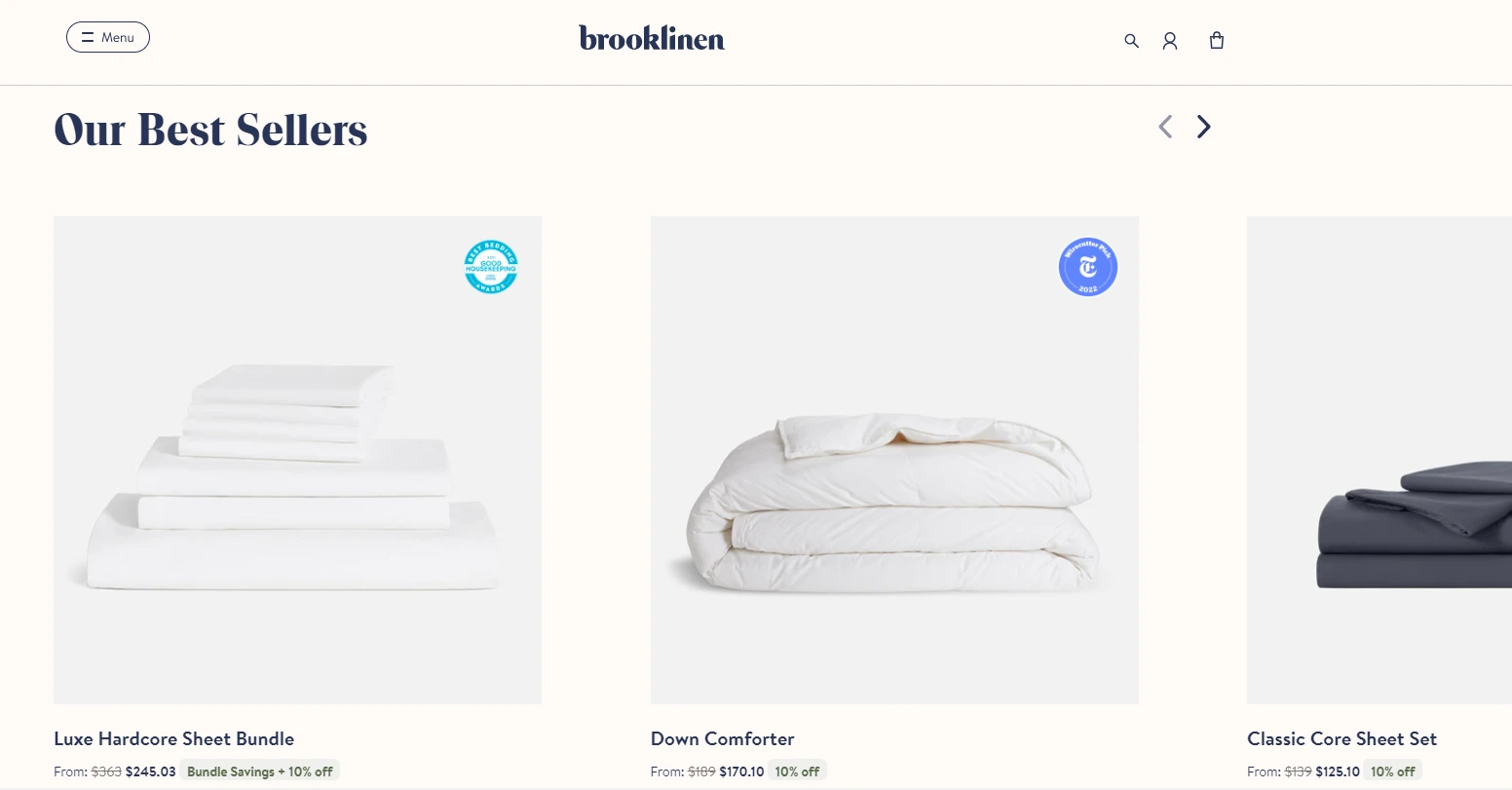
12) User-generated content
User-Generated Content (UGC) is a strategy that involves encouraging customers to create and share content related to your brand or products. UGC can include reviews, photos, videos, and social media posts. By leveraging UGC, businesses can build social proof and credibility, as customers are more likely to trust content created by their peers rather than traditional advertising.
To implement this strategy, businesses can incentivize customers to create and share UGC by offering rewards or featuring their content on the brand’s social media channels. UGC can also be used in advertising campaigns to increase conversions, as it provides a more authentic and relatable perspective of the brand.
One example of a D2C brand that has effectively implemented UGC is Glossier.
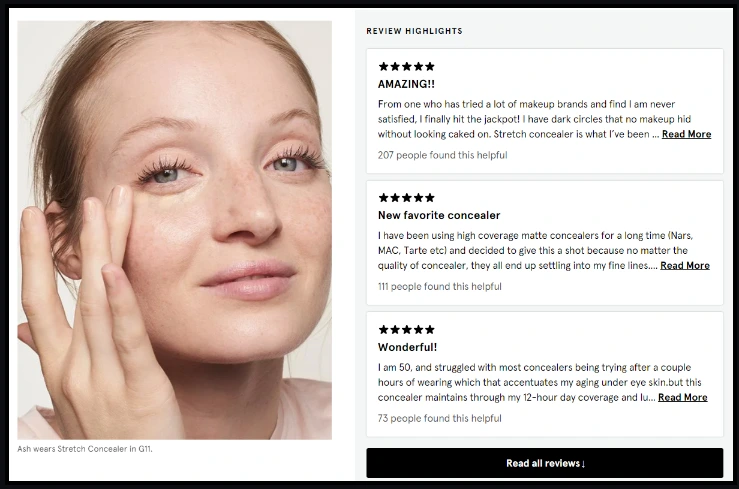
The website and social media pages include content created by users. On the Glossier website, you can browse user reviews, how-to videos, and product images by clicking on any product.
Visual UGC tools like Yotpo and Stamped.io can help brands make virtual shopping experiences that build community.
13) Cart abandonment strategies
Cart abandonment is a problem for D2C brands, but retargeting campaigns can help recover lost sales. By tracking users who left their carts and displaying targeted ads to them, brands can remind them of the products they left behind and encourage them to complete their purchases. Offering discounts or incentives can also help, with personalized emails being an effective way to do this.
Analyzing cart abandonment reasons is also important, as it can help identify common issues such as high shipping costs or a complicated checkout process, allowing brands to make changes to address them.
The goal of Better Brand’s cart abandonment email marketing is to send customers a clear message and give them something extra. Their emails are easy to read and have a clear call-to-action button and a list of the things that are still in the customer’s shopping cart.

14) Customer loyalty programs
Customer Loyalty Programs are effective for retaining customers and promoting repeat purchases. Offering loyalty points or rewards for each purchase, which can be redeemed for discounts or free products, encourages customers to keep returning and increases their lifetime value. Exclusive discounts and promotions for members can make the program more attractive.
Data analysis of customer purchase history and engagement with the loyalty program can guide program improvement decisions. For example, offering more rewards for specific products or purchase amounts may increase engagement.
Sephora’s Beauty Insider is a great example of a successful loyalty program that provides exclusive discounts, early access to new products, and free beauty classes to members.

Platforms such as Smile.io, LoyaltyLion, or S Loyalty can be used to create and manage loyalty programs, track customer engagement, and reward customer loyalty.
15) Chatbots and live chat
Chatbots can be programmed to answer frequently asked questions and provide basic information about products and services to save time for both customers and support teams. Chatbots can be available 24/7, providing instant support even outside of business hours.
Live chat is a more personal and direct way for customers to get help from support teams. It allows for real-time conversation and can help resolve issues more quickly than email or phone support. Live chat can also be used to upsell and cross-sell products by providing personalized recommendations.
Chatbots and live chat can provide valuable data on customer preferences, pain points, and behavior. This data can be used to improve product offerings, marketing strategies, and customer support processes. For example, if customers frequently ask about a particular feature or product, the brand can prioritize it in future product development.
In terms of tools, popular options for implementing chatbots and live chat include Intercom, Zendesk, and Drift. These tools offer features such as chatbot customization, automated responses, and chat analytics to help brands optimize their customer support and engagement.
16) Gamification
Gamification is the process of incorporating game-like elements into a non-game context in order to engage and motivate customers. This strategy can be implemented by D2C brands in a variety of ways, such as creating loyalty programs with rewards for completing certain actions or milestones, offering badges or levels for user achievements, or even hosting online competitions or challenges.
By providing a fun and interactive experience, gamification can help D2C brands to drive repeat purchases and increase customer loyalty. Tools such as Badgeville or Bunchball can help D2C brands to implement gamification features into their websites or mobile apps. These tools allow for the creation of customized challenges, rewards, and leaderboards, and can track user progress and engagement data to help optimize the gamification experience.
For example, the fitness app Strava encourages users to complete challenges and earn badges for running certain distances or achieving certain speeds. This not only motivates users to stay active but also fosters a sense of community and competition among the app’s users.
17) Social proof
Social Proof is a marketing strategy that involves using customer reviews, testimonials, and social media engagement to build trust and credibility with potential customers. By showcasing positive feedback from previous customers, brands can establish credibility and encourage new customers to make a purchase.
One way to implement social proof is by using customer reviews and testimonials on product pages and other marketing materials. Brands can also showcase social media followers and engagement, such as the number of likes, comments, and shares on posts. This can help build credibility and trust with potential customers.
Brands can use social proof in advertising campaigns to increase conversions. For example, by including customer reviews or social media engagement in ad copy or creatives, brands can showcase the popularity and positive feedback of their products.
18) Upselling and cross-selling
Upselling and Cross-Selling strategies involve offering customers additional products or upgrades to increase revenue, utilizing data analysis to make personalized recommendations, and implementing effective upselling and cross-selling techniques to boost sales.
D2C brands like Stitch Fix, for example, successfully use personalized product recommendations to increase sales. The company uses data such as customer preferences, purchase history, and feedback to curate personalized clothing and styling recommendations for each customer. Stitch Fix also offers add-ons and upgrades at checkout and uses upselling and cross-selling techniques, such as suggesting complementary items or complete outfits.
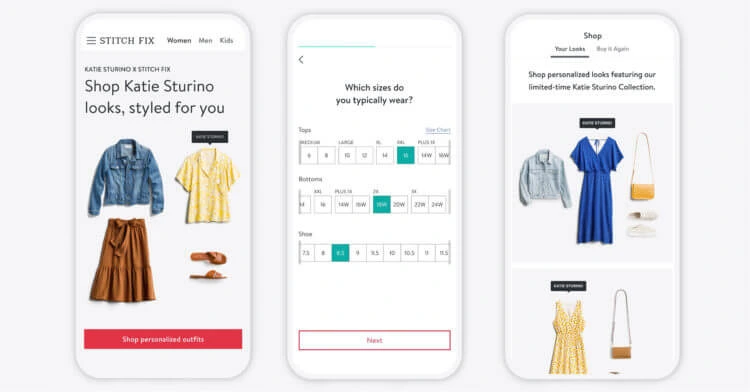
Tools like Shopify’s Product Upsell app can also be used by D2C brands to implement upselling and cross-selling techniques on their e-commerce stores. The app recommends complementary products to customers during the checkout process, increasing the likelihood of additional purchases.
19) A/B testing
A/B testing is a method of testing different versions of marketing strategies and campaigns to determine which performs better. This is done by randomly splitting the audience into two groups and showing them different variations of the marketing material. By analyzing data from both groups, it becomes possible to determine which variation was more successful.
A/B testing can be used to test a variety of ecommerce marketing strategies, including email subject lines, ad copy, website design, pricing, and more. By continuously testing and analyzing data, businesses can identify the most effective approach and optimize their marketing campaigns for better performance.
There are several tools available to help with A/B testing, such as Google Optimize, Optimizely, and Unbounce. These tools allow businesses to create and test different variations of their marketing campaigns and provide data analysis to help determine which variations performed best.
20) Social listening
Social Listening is the practice of monitoring social media platforms and online communities to gain insights about customers, competitors, and industry trends. It involves tracking conversations, mentions, and feedback related to a brand or product in order to gather valuable data and make informed decisions.
By using social listening tools, businesses can analyze customer sentiment and identify emerging trends and topics. This information can be used to inform marketing campaigns, improve customer engagement, and identify potential issues before they become major problems.
Postscript
In conclusion, ecommerce growth strategies are essential for businesses looking to succeed in the digital marketplace. There are numerous tactics that ecommerce businesses can use to drive traffic, increase conversions, and retain customers.
It’s important for ecommerce businesses to stay up-to-date with the latest trends and technologies, as the digital landscape is constantly evolving. By using data analytics and regularly analyzing the effectiveness of their strategies, businesses can make informed decisions about how to improve their online presence and grow their revenue.
Ultimately, the key to success in ecommerce is providing a seamless and personalized experience for your customers. By understanding their needs and preferences and tailoring your strategies accordingly, you can build trust and establish long-term relationships with your customers, ultimately leading to increased revenue and brand loyalty. With the right tools and tactics, D2C brands can succeed in today’s competitive ecommerce realm and achieve long-term growth and success.
You may also like
Essential resources for your success
















